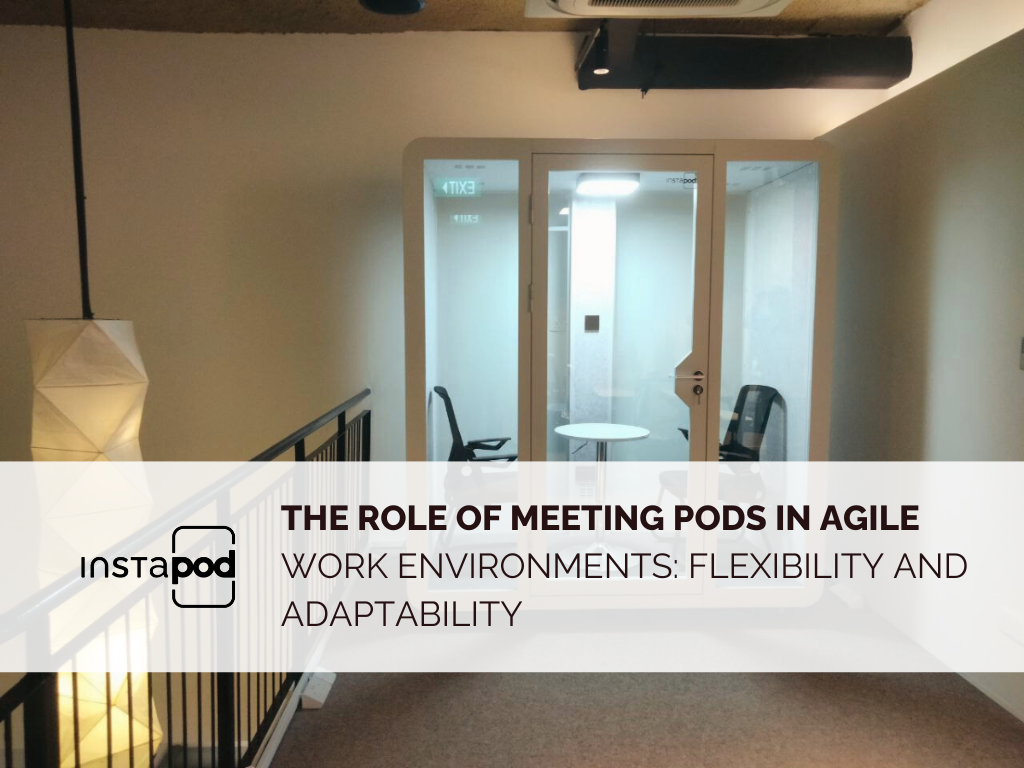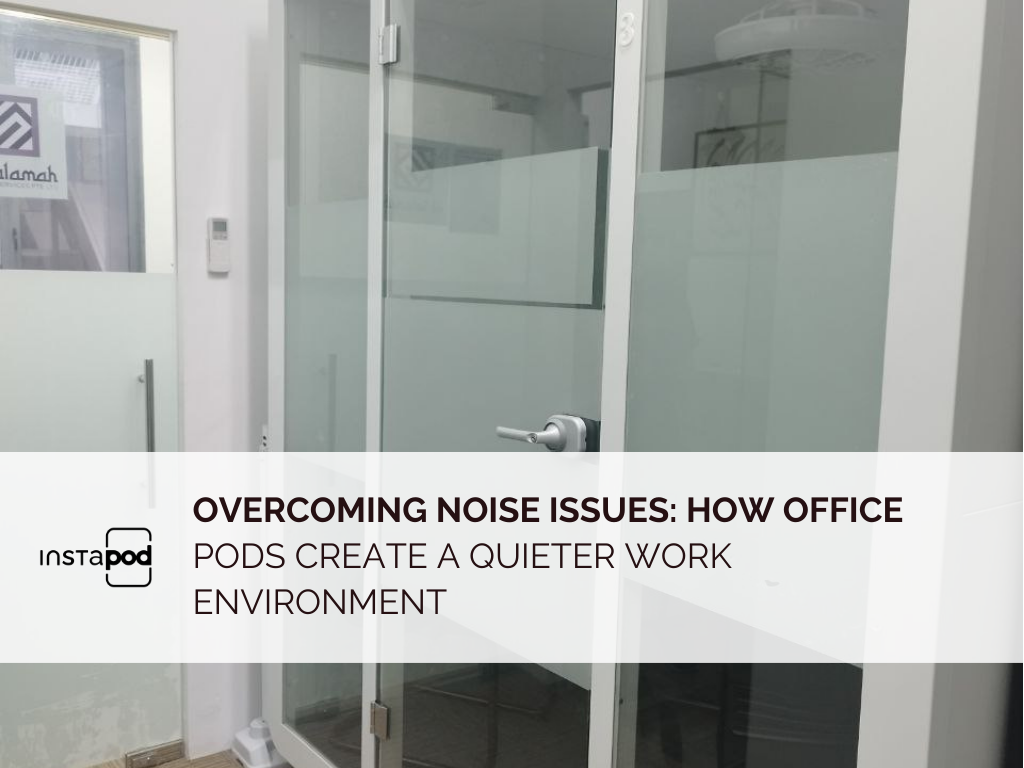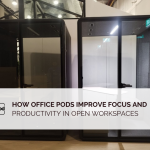No pods added to your quote request yet. Add some now for a free quote!
The Role of Meeting Pods in Agile Work Environments: Flexibility and Adaptability

As businesses increasingly shift towards agile work environments, the need for flexible, adaptable spaces has become paramount. Agile workspaces are designed to accommodate ever-changing teams and projects, requiring layouts that support collaboration, concentration, and creativity. One key element gaining popularity in these spaces is the meeting pod—a compact, modular solution that offers privacy and versatility in open offices.
This article explores how meeting pods contribute to flexibility and adaptability in agile workplaces, driving productivity and enhancing the employee experience.
Understanding Agile Work Environments
Agile work environments are built on the principles of flexibility, collaboration, and responsiveness to change. These spaces are designed to empower teams to quickly adjust their workflows, tasks, and work settings based on evolving project requirements. Unlike traditional offices with fixed cubicles or conference rooms, agile spaces often feature open layouts and multifunctional zones that cater to a variety of work styles, such as group meetings, individual focus time, and casual brainstorming sessions.
However, agile work environments also come with challenges. Open layouts can lead to distractions, and finding private spaces for focused discussions or confidential meetings may be difficult. This is where meeting pods shine.
The Role of Meeting Pods in Agile Offices
- Flexible Space Management
One of the primary features of meeting pods is their mobility. They can be moved or rearranged with ease, allowing businesses to adapt their office layouts as needed. Whether a company expands or downsizes, the modular nature of meeting pods ensures that they can be reconfigured to fit the changing requirements of the workspace.
For example, a team working on a sprint may need more meeting spaces for quick stand-up discussions or private brainstorming sessions. Meeting pods can be set up in high-traffic areas to accommodate spontaneous meetings without the need for permanent construction. This flexibility allows organizations to maximize the functionality of their office space without compromising productivity.
- Privacy in Open Office Layouts
Agile work environments often embrace open floor plans, which promote transparency and collaboration. However, open spaces can become noisy and distracting, making it difficult for employees to concentrate or hold confidential conversations. Meeting pods address this issue by providing a soundproof or semi-soundproof environment where individuals or small groups can retreat for focused work or private discussions.
Whether it’s a one-on-one meeting, a quick brainstorming session, or a private phone call, the pod creates a comfortable space that offers a balance between openness and privacy. This adaptability is especially important in agile teams, where the need for collaboration is often balanced with the need for personal focus.
- Enhanced Collaboration
Agile teams rely heavily on effective collaboration to succeed, and meeting pods are designed with this in mind. Their compact size and enclosed design foster a sense of intimacy and concentration, making them ideal for small group discussions. Unlike traditional conference rooms, which can feel too formal or disconnected from the rest of the office, pods allow for impromptu meetings that feel more casual and approachable.
This adaptability encourages cross-functional teams to collaborate more freely, as they can easily step into a pod for a quick huddle without needing to schedule a formal meeting. This dynamic is particularly beneficial in fast-paced work environments where decisions need to be made quickly.
- Adaptable to Different Technologies
Meeting pods are often equipped with the latest technology, making them perfect for agile teams that depend on digital collaboration tools. Most pods come with built-in power outlets, screens, and sound systems that can support virtual meetings, allowing teams to connect with remote workers or clients seamlessly.
This technology integration also helps agile teams switch between different modes of work effortlessly. A pod can be used for a video conference in the morning, a collaborative brainstorming session in the afternoon, and a private phone call later in the day, all without any significant changes in setup. The adaptability of meeting pods to different technologies ensures that they remain valuable assets in tech-forward, agile workspaces.
Supporting Employee Well-Being and Focus
Agile work environments aim to foster a culture of flexibility and autonomy, but they must also prioritize employee well-being. Constant noise and activity in an open office can cause stress and fatigue, reducing productivity. Meeting pods provide employees with a retreat where they can focus, take a break from distractions, or recharge in a quieter, controlled setting.
By offering this flexibility, meeting pods contribute to an environment that supports both collaboration and individual well-being, helping teams stay productive without feeling overwhelmed by their surroundings.
Future of Meeting Pods in Agile Workspaces
As companies continue to embrace agile methodologies, the demand for adaptable, flexible office solutions like meeting pods will likely increase. With the rise of hybrid work models and remote teams, meeting pods offer a practical, future-proof solution for creating multifunctional spaces that can evolve with the business. Their ability to integrate technology, offer privacy, and support collaboration makes them indispensable tools for companies looking to optimize their workspaces for agility.
Conclusion
Meeting pods are becoming essential components of agile work environments, offering the flexibility, adaptability, and privacy needed to support dynamic teams. Their modular nature allows for easy reconfiguration, while their soundproof design ensures employees have spaces for focused work. By blending open collaboration with personal concentration, meeting pods strike a balance that enhances productivity and supports the evolving needs of modern workplaces. As agile methodologies continue to reshape how we work, meeting pods will remain crucial in creating office spaces that are as dynamic as the teams that use them.
Check these out too!
-
How Office Pods Improve Focus and Productivity in Open WorkspacesSeptember 16, 2024/0 Comments
-
-
Maximizing Space Efficiency with Instapod in Crowded WorkplacesSeptember 9, 2024/




